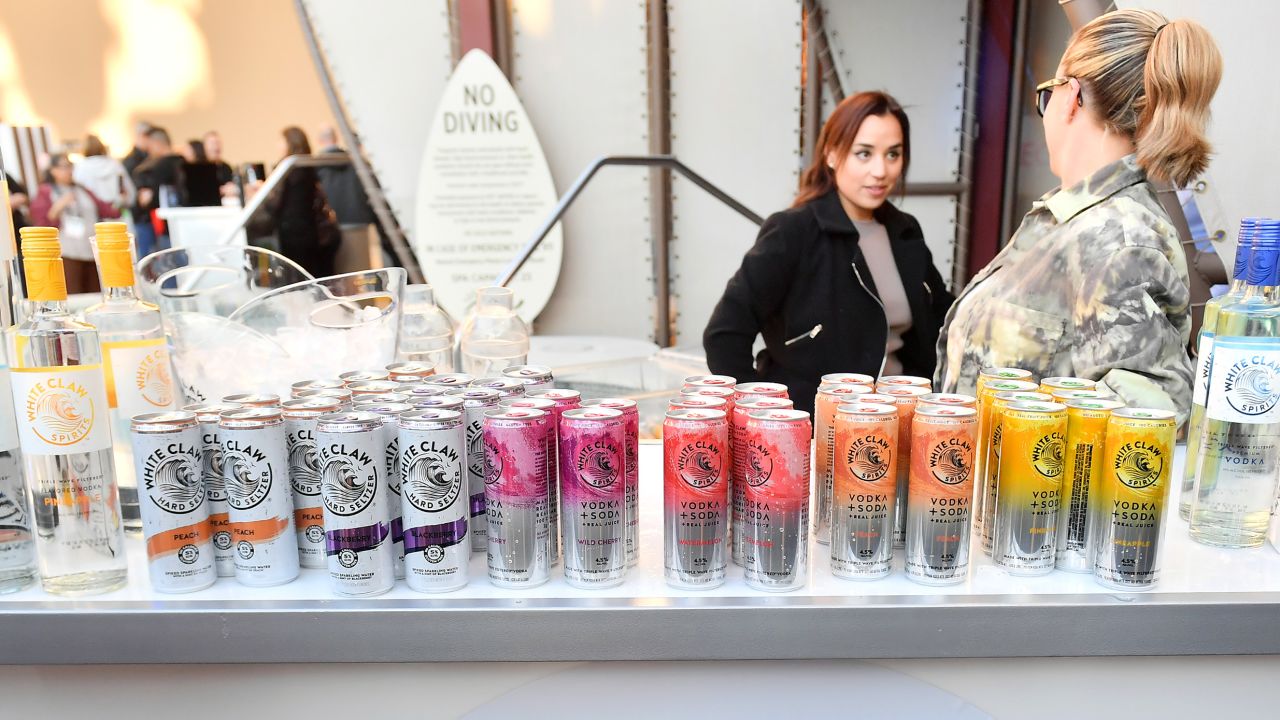Suddenly, your beverage is taller.
Beverage brands rely on packaging shape and design to draw in consumers. Now they’re counting on a new slew of skinny aluminum cans to subtly signal to consumers that their exotic new drinks are healthier than the beer and sodas in the short, round cans of old.
Topo Chico, Simply and SunnyD recently launched alcoholic seltzers and cocktails in tall, thin cans, while Day One, Celsius and Starbucks have debuted sparkling water and energy drinks in new slim cans. Coke with Coffee launched in a slim version last year, too.
As if describing a human, Ball, one of the largest producers of aluminum cans, highlights the “shorter, leaner physique” of its 12 oz. sleek cans compared with its classic (also 12 oz.) stouter version.
Drink manufacturers are aiming to distinguish their products on crowded shelves and save money on shipping and packaging with skinny cans, say analysts and drink makers.

“Consumers see slim cans as more sophisticated, which makes them feel more sophisticated,” said Duane Stanford, the editor of industry trade publication Beverage Digest. “For people who spend $3 for a mushroom elixir, they want the package to signal trendy too.”
Aluminum cans
Soft drinks appeared in cans as early as 1938, but the first aluminum beverage can was used for diet cola called “Slenderella” in 1963, according to the Can Manufacturers Institute, a trade association. By 1967, Pepsi and Coke followed.
Traditionally, beverage companies opted for the 12 oz. squat model to allow more room to advertise the contents of their drink on the body of the can with colorful details and logos.
Companies have even been panned for switching to skinny can models. In 2011, Pepsi released a “taller, sassier” version of its traditional can. The can, presented at New York’s Fashion Week, had the tagline: “The New Skinny.” It was widely criticized as offensive and the National Eating Disorders Association said the company’s comments were both “thoughtless and irresponsible.”
So why bring them back now? Partly because slim cans are seen as premium and innovative. A growing number of drinks are catering to health-driven consumers, and slender cans signal these characteristics.
Companies are copying the success of other brands’ slim cans. Red Bull was one of the first brands to popularize slim cans, and White Claw saw success with its hard seltzer in thin white cans.
Aluminum cans, regardless of size, are environmentally better than plastics, said Judith Enck, a former Environmental Protection Agency regional administrator and current president of Beyond Plastics. They can be made from recycled material and can more easily be recycled. If littered, they do not pose the same risk as plastics, she said.
There’s also a business incentive for skinny designs.
Brands can squeeze more 12 oz. skinny cans on store shelves, warehouse pallets and trucks than wider cans, said Dave Fedewa, a partner at McKinsey who consults for retail and consumer packaged goods companies. That means higher sales and cost savings.
But the key, Fedewa said, is that skinny cans catch the eye: “It’s funny how much growth that can drive in retail.”
Bagikan Berita Ini
















0 Response to "Why skinny soda cans are everywhere - CNN"
Post a Comment